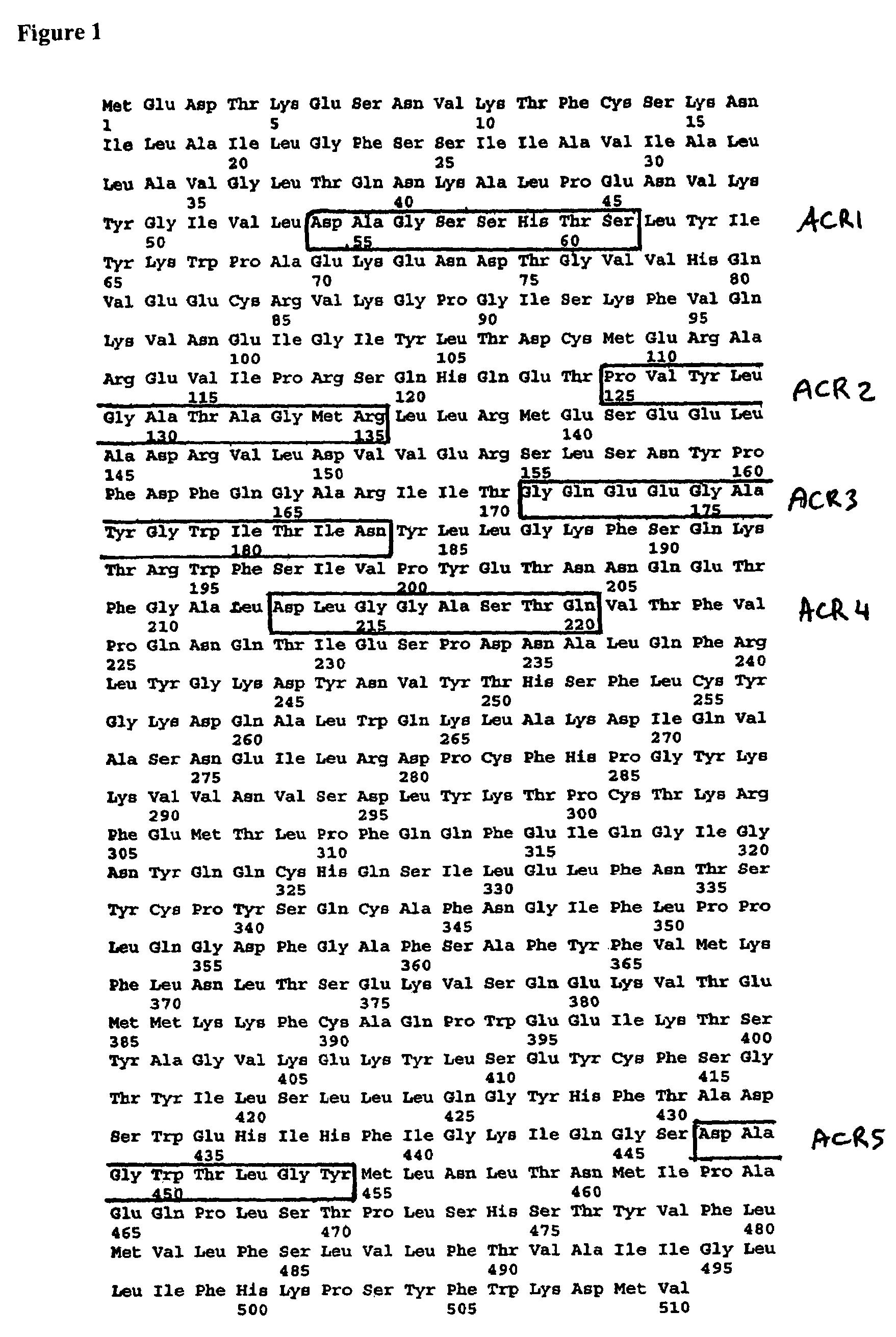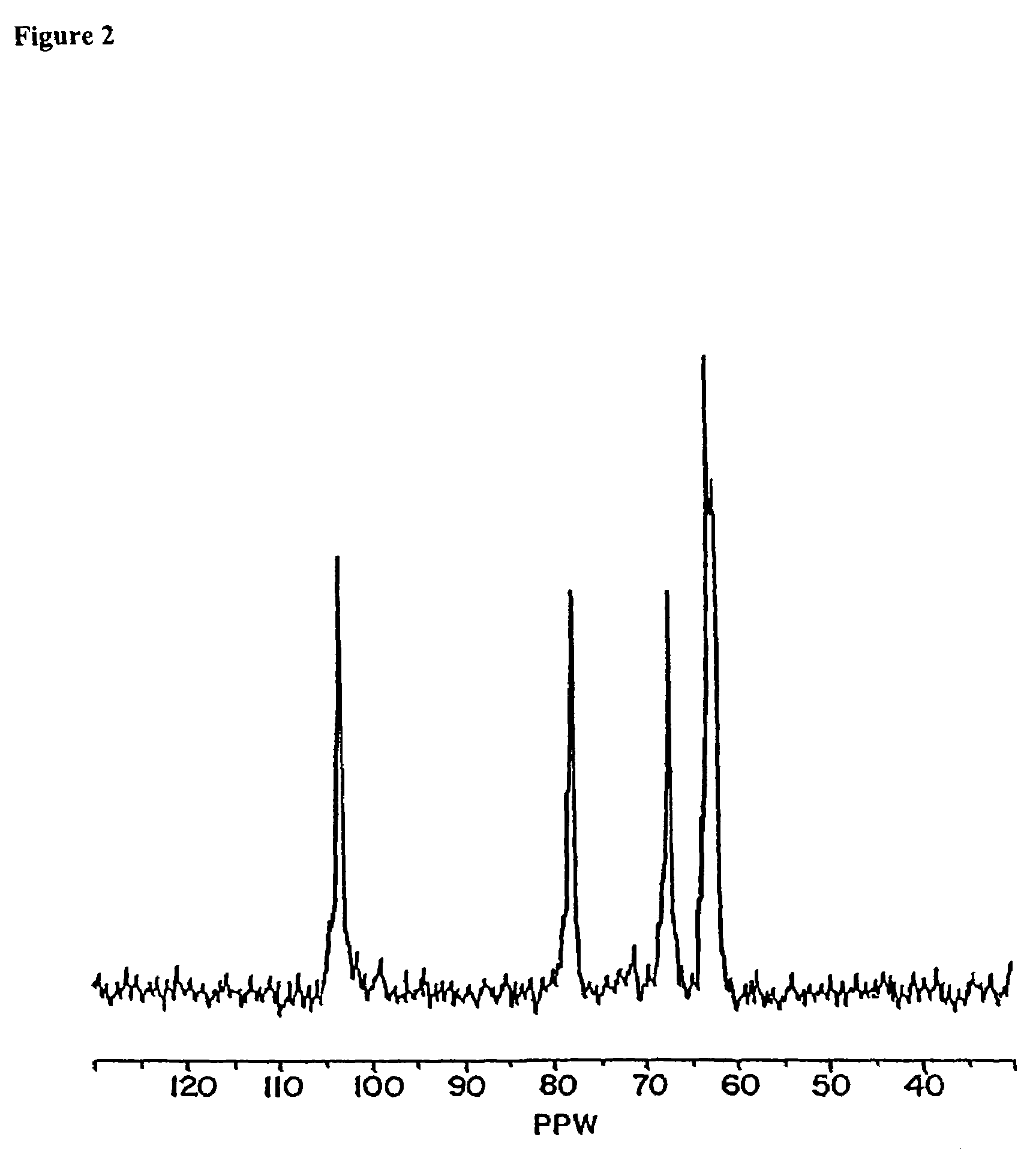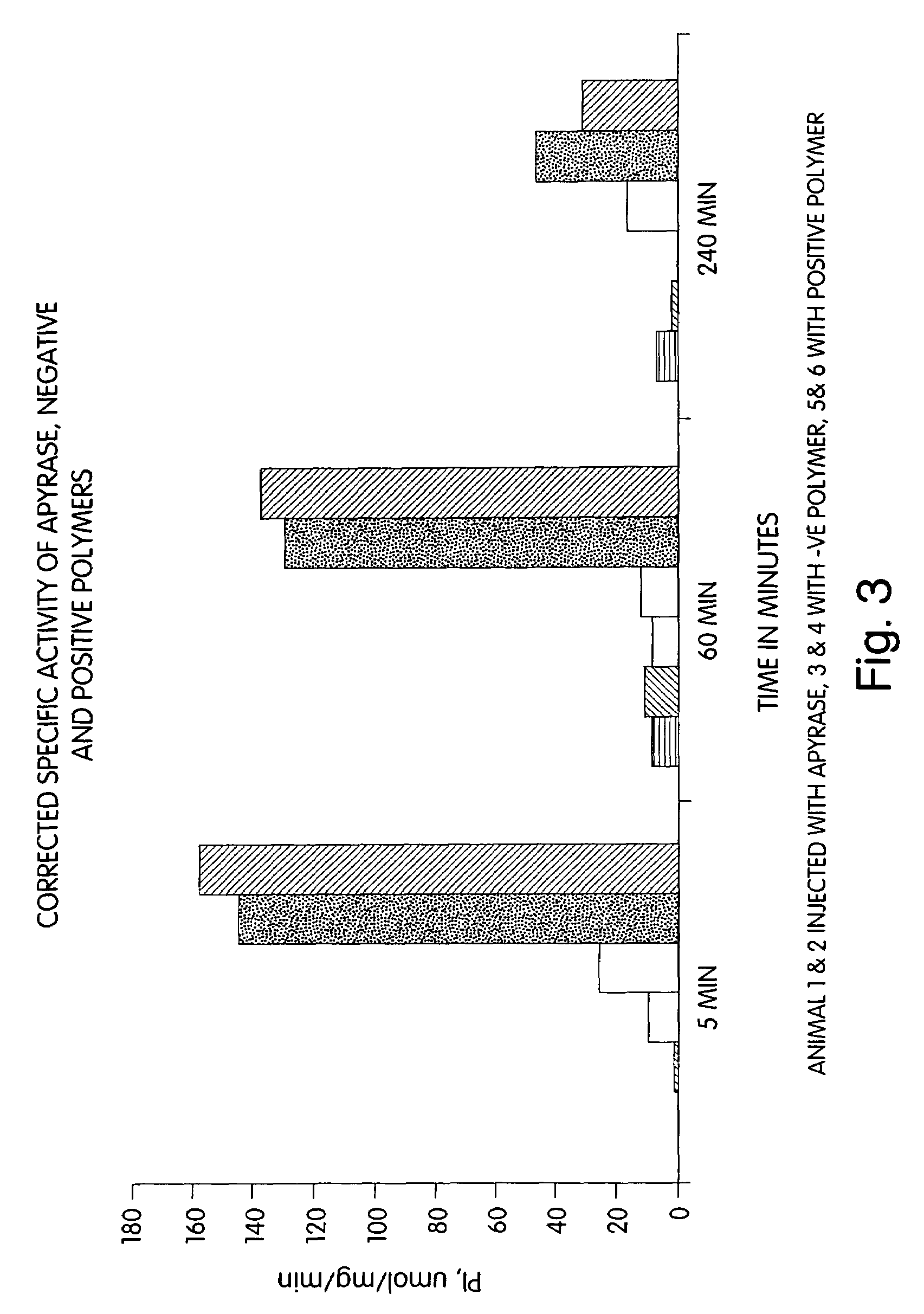Conjugates comprising a biodegradable polymer and uses therefor
a biodegradable polymer and conjugate technology, applied in the direction of synthetic polymer active ingredients, peptide/protein ingredients, prosthesis, etc., can solve the problems of long circulating half-life, rapid clearance of materials from the blood stream by the macrophages of the reticuloendothelial system, and use of injectable drug delivery materials. , to achieve the effect of extending the in vivo half-life, less toxic, and increasing biological activity
- Summary
- Abstract
- Description
- Claims
- Application Information
AI Technical Summary
Benefits of technology
Problems solved by technology
Method used
Image
Examples
example 1
Formation of Aldehyde-Containing Polymer by Polysaccharide Oxidation
[0270]Dextran (MW=485 kDa), 22.5 g was dissolved in 500 mL water. Sodium periodate, 57 g, was dissolved in 200 mL of water and mixed with the dextran solution at 25° C. After 8 hours of incubation, the high-molecular components were extracted from the reaction mixture by flow dialysis, using a hollow fiber Amicon™ cartridge with a 10 kDa cutoff. The reaction mixture was concentrated to 200 mL, then a 10 fold volume of water (2 liters) was passed through. A forty mL aliquot of the reaction mixture was lyophilized to yield 1.81 g of product. The resultant polymer was slowly soluble in water at neutral and low pH and readily dissolved at pH>7 and remained soluble after pH adjustment to pH<7. Ten milligrams of the polymer were dissolved in deuterium oxide and a proton NMR was obtained.
example 2
Formation of Polyalcohol by Reduction of Aldehyde-Containing Polymer
[0271]Sodium borohydride, 20 g, was dissolved in 20 mL water and mixed with 160 mL of 4.5% solution of the aldehyde containing polymer from Example 1. After 2 hours of incubation, the pH was adjusted to 6. Twenty minutes later, high molecular components were extracted by flow dialysis (as described in Example 1) and separated into two fractions using an Amicon cartridge with a 100 kDa cutoff. Both fractions were lyophilized. Yields: low molecular weight fractions: 2.4 g; high molecular weight fraction: 3.1 g. Ten milligrams of low molecular weight polymer were dissolved in 1 mL of deutero DMSO and proton NMR were obtained. FIG. 2 is a 13C NMR of the polyacetal, dissolved in deuterium oxide which demonstrates carbons functionalized by alcohol functionality in the biodegradable biocompatible polyacetal.
example 3
Preparation of Apyrase
[0272]The apyrase used in the examples was a purified form of potato apyrase. The apyrase was purchased from Aldrich-Sigma (apyrase grade VII, cat.# A6535). The apyrase has an activity over 200 units / mg. One unit refers to the amount of apyrase that liberates 1.0 μmole of inorganic phosphate (Pi) from ATP or ADP per minute at pH 6.5 at 30° C. This preparation has a low ATPase / ADPase ratio. The apyrase was further purified as follows.
[0273]Purified apyrase was purified in the native conformation by the Cibacron Blue column procedure. Potato apyrase eluted as a single peak of active enzyme (950 units / ml of ADPase activity) in the last step of Cibacron Blue affinity chromatography, as described in Kettlun et al. (1982) Phytochemistry 21:551. Protein from the active peak was analyzed by sodium dodecyl sulfate-polyacrylamide gel electrophoresis followed by electroblotting onto PVDF membranes (Millipore). The membrane was stained with Ponceau S, and a single band of ...
PUM
| Property | Measurement | Unit |
|---|---|---|
| molecular weight | aaaaa | aaaaa |
| molecular weight | aaaaa | aaaaa |
| diameter | aaaaa | aaaaa |
Abstract
Description
Claims
Application Information
 Login to View More
Login to View More - R&D
- Intellectual Property
- Life Sciences
- Materials
- Tech Scout
- Unparalleled Data Quality
- Higher Quality Content
- 60% Fewer Hallucinations
Browse by: Latest US Patents, China's latest patents, Technical Efficacy Thesaurus, Application Domain, Technology Topic, Popular Technical Reports.
© 2025 PatSnap. All rights reserved.Legal|Privacy policy|Modern Slavery Act Transparency Statement|Sitemap|About US| Contact US: help@patsnap.com



